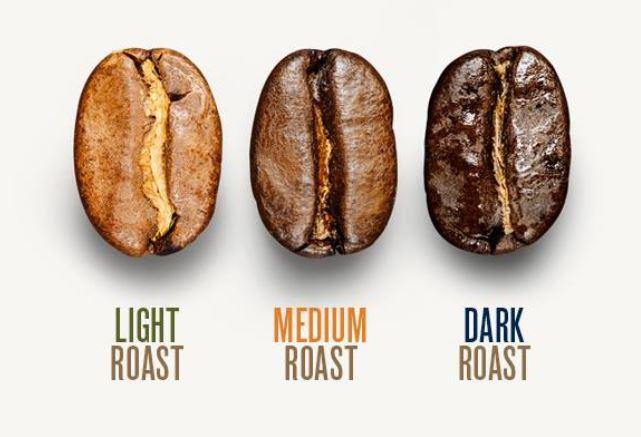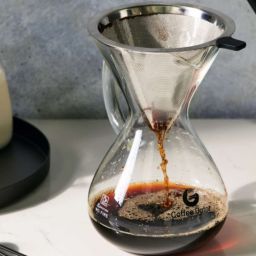
When we talk about coffee, the terms “light” and “dark roast” often crop up, but what exactly do they mean? Light and dark roast coffees refer to how long coffee beans are roasted. This process not only changes the color of the beans but also influences their flavor, acidity, and even caffeine content.
During roasting, beans undergo significant transformations. Light roasts are stopped early in the roasting process, retaining a lighter color and higher acidity. This short roasting period preserves many of the bean’s original flavors, which can range from fruity to floral. On the other hand, dark roasts are cooked longer, leading to a darker color with oils surfacing on the beans. This results in a richer, often chocolatey flavor, with less acidity, making it a gentler choice for coffee lovers with sensitive stomachs.
Key Takeaways on Light Vs Dark Roast Coffee
- Flavor Differences
- Light roasts boast a bright, acidic, and fruity profile, capturing the bean’s inherent complexities.
- Dark roasts offer a bold, chocolatey experience, with a robust flavor that fills the palate.
- Caffeine Content
- Despite assumptions that darker roasts are stronger in caffeine, light roasts actually contain slightly more. This is because they are roasted for a shorter time, preserving more of the caffeine.
- Health Implications
- For those with a sensitive stomach, dark roasts may be more suitable as they have lower acidity, which can be easier to digest.
The Roasting Process and Its Impact
Roasting coffee is both an art and a science that significantly influences the final cup’s flavor, acidity, and caffeine content. The two main variables in this process are temperature and time.
Temperature and Time Differences: Light roasts usually reach temperatures between 350°F to 400°F and are stopped at what’s known as the “first crack” — a popping sound made by the beans when they expand and crack open. Dark roasts go beyond this point, reaching temperatures up to 450°F or higher, and may reach the “second crack,” where the beans sound off a quieter, less intense crack.
Chemical Changes During Roasting: As beans are roasted, complex chemical reactions occur. These include the Maillard reaction, which also happens in toasted bread and seared meat, producing rich, complex flavor compounds. Light roasts preserve more of the bean’s original flavors, which can include fruity and floral notes, while dark roasts develop new flavors like smokiness or chocolate notes.
Flavor Profiles and Characteristics
The differences in roasting levels lead to distinct sensory experiences in your coffee cup.
Taste: Light roasts tend to have a sharper, more acidic taste that highlights the bean’s natural character. They can exhibit notes of citrus, berries, or flowers, depending on the bean’s origin. Dark roasts, however, tend to taste bolder and smoother, with pronounced flavors of chocolate, nut, or spice. The longer roasting time reduces acidity, which allows other, richer flavors to take precedence.
Aroma: The aroma of coffee can greatly influence our perception of taste. Light roasts often carry a bright, vibrant bouquet, enhancing their complexity. Dark roasts offer a deep, robust aroma, sometimes with smoky or burnt undertones that signal a hearty coffee experience.
Body: “Body” in coffee terminology refers to the physical mouthfeel of the brew. Light roasts generally have a lighter body, which can sometimes be perceived as watery. Dark roasts provide a fuller body, often described as rich or creamy, which can linger pleasantly on the palate.
Caffeine Levels and Health Considerations
There are many misconceptions surrounding the caffeine content of light versus dark roast coffee. Let’s explore these myths and the actual realities, as well as discuss the health implications of each roast type.
Caffeine Content Myths and Realities
Contrary to popular belief, light roast coffee generally contains slightly more caffeine than dark roast. The common misconception is that the stronger flavor of dark roast implies higher caffeine, but in reality, caffeine is slightly more degraded in dark roasts due to the longer and hotter roasting process. Thus, if you’re looking for a bit more caffeine kick, light roast might be your go-to.
Health Benefits of Different Roasts
Light roasts not only potentially have more caffeine but also retain more of their original antioxidants because they are roasted for a shorter period. These antioxidants are beneficial for reducing inflammation and protecting cells from damage. Dark roasts, on the other hand, are often preferred by those with sensitive stomachs.
The extended roasting process breaks down more of the acids found in coffee, which can result in a brew that’s easier on the stomach and lower in acidity.
Best Brewing Methods for Each Roast
Choosing the right brewing method can significantly enhance your coffee experience, playing to the strengths of either light or dark roasts.
For light roasts, the Aeropress is an excellent choice. This method accentuates the vibrant, nuanced flavors typical of lighter roasts without overshadowing their inherent qualities. The quick brewing cycle prevents the extraction of bitter compounds, making for a crisp and clear cup.
Dark roasts are splendidly suited to the French Press. This method allows for full immersion brewing, which extracts the deep, rich flavors characteristic of dark roasted beans. The natural oils and bold flavors are more pronounced in this brewing style, offering a dense, flavorful cup that highlights the smoky, chocolatey notes of the roast.
Enhancing Coffee Qualities
Each brewing method can highlight different aspects of the coffee. Light roasts benefit from methods that enhance their acidic and fruity flavors, while dark roasts excel in methods that showcase their richness and full-bodied nature. By matching your coffee roast to the most compatible brewing technique, you ensure a more enjoyable and fulfilling coffee experience.
FAQs
Perceived Sweetness and Bitterness
Light roasts are often perceived as more acidic and less sweet than dark roasts. This is because the shorter roasting time preserves many of the bean’s natural, fruity acids, which can add a perceived sourness. Dark roasts, conversely, are seen as sweeter but more bitter. This sweetness comes from the caramelization of sugars during the longer roasting process, while the bitterness is typically due to the more extensive development of the beans.
Reasons for Sour Taste in Light Roasts
The sour taste in light roasts stems from the higher acidity, which is a natural characteristic of coffee beans that is more pronounced in lighter roasts. The shorter roasting process doesn’t break down these acids as much as in dark roasts, preserving the bright and tangy flavors that are often described as sour.
Final Thoughts
Light and dark roast coffees offer distinctly different experiences that cater to varied palates and preferences. Light roasts bring out the bean’s natural acidity and complex flavors, ideal for those who enjoy a brighter, more vibrant cup. Dark roasts provide a richer, bolder taste, often preferred for their robust and smooth characteristics.









